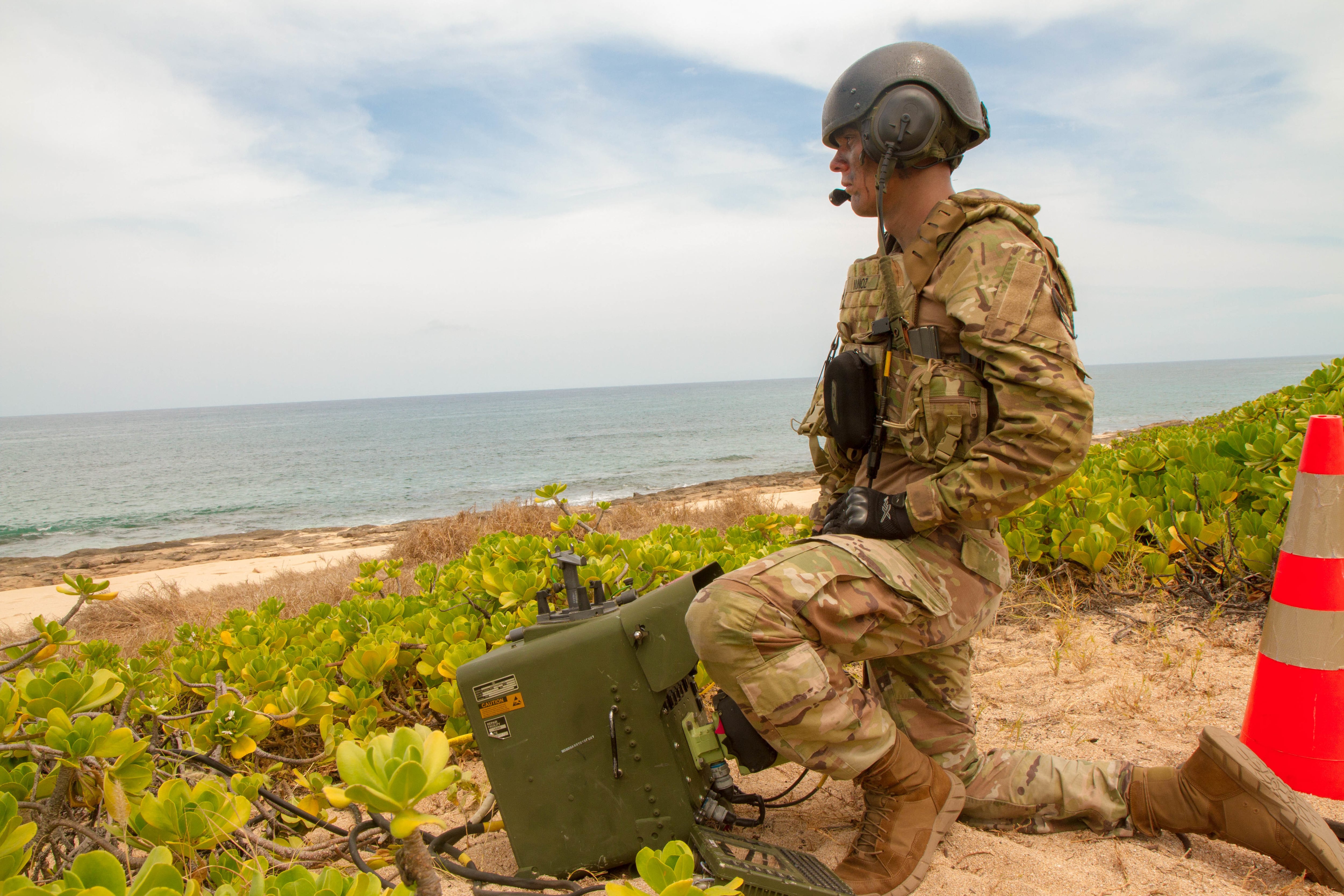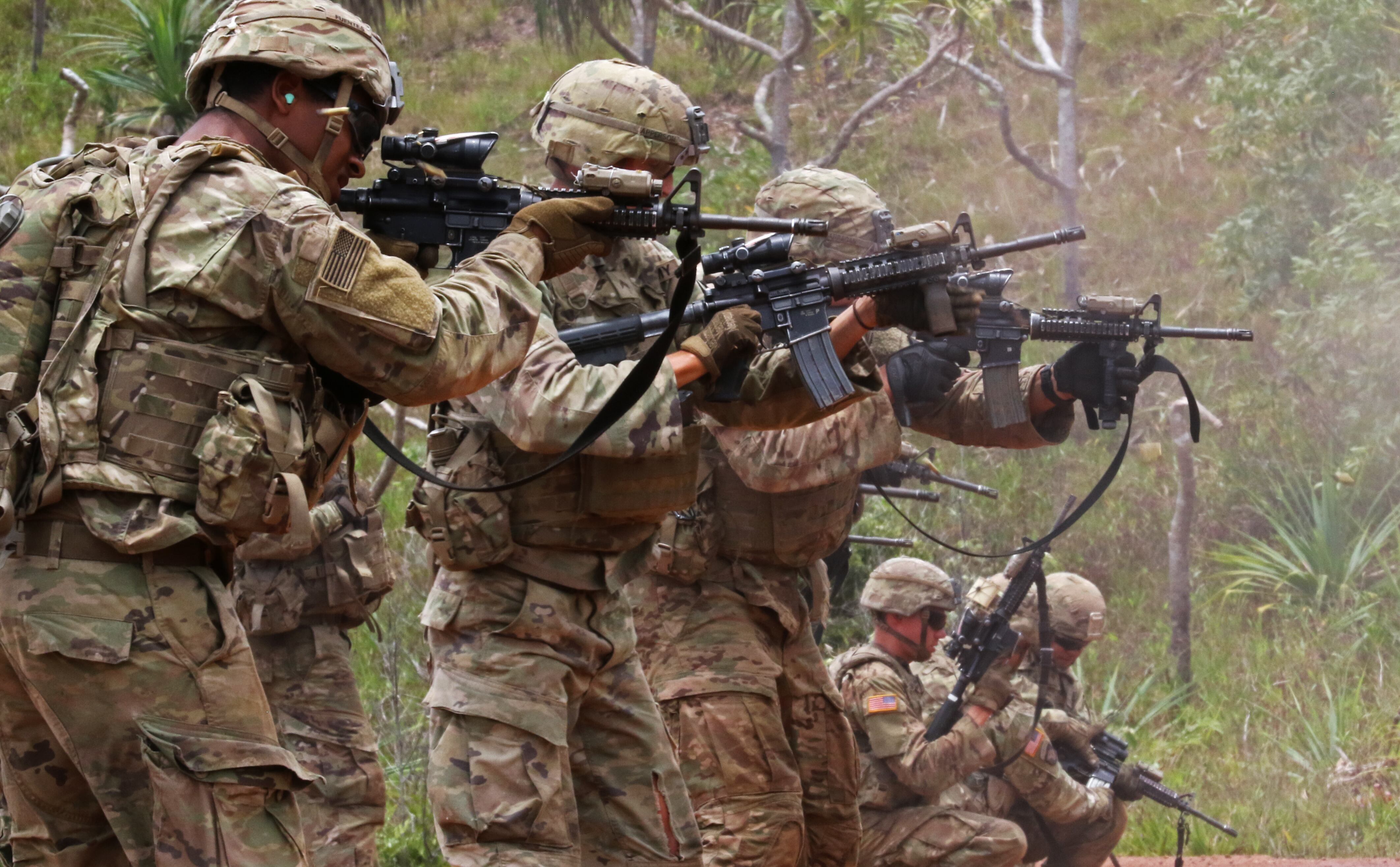The future fight, especially in the vast expanse of the Pacific region, will not focus on which units go where and which types of units attack enemy formations. Instead, the deputy commander of the Army’s newest command said, it will be about systems attacking systems.
That will require targeting system nodes “every single day,” said Lt. Gen. Eric Wesley, Deputy Commander, and Commander of Futures and Concepts, Army Futures Command.
And right now, the Army isn’t there yet.
RELATED

Wesley and others detailed this and other challenges facing the Army in the U.S. Indo-Pacific Command at 7th Annual Association of the U.S. Army’s Land Forces Pacific symposium held in Hawaii this week.
During various panels the first day of the event, Army leaders alongside other services and joint partners looked at the strategic environment, interoperability between militaries and how the combination of forces will work in the newest concept of warfighting called Multi-Domain Operations.
“We’re no longer fighting those echelons, we’re fighting systems,” Wesley said. “We need to target those nodes every single day.”
That’s important because the home-based stockpiles of ammunition and targeting capabilities by China or others in the region could outlast the first responding units. So, every hit counts.
But attention wasn’t consumed by steel on steel combat talk, instead leaders leaned heavily on the “competition” phase, which is a daily happening across the globe in each of the geographic zones where the United States and its allies operate.
Maj. Gen. John Morrison, head of the Army’s Cyber Center of Excellence at Fort Gordon, Georgia, said the Army has build its first cyber force battalion to support from the division level down and has put the first electronic warfare platoons into formations.
That will soon mean “layered effects” involving cyber across the battlefield, he said.
“Continually stimulating sensors, targeting, that has to be happening on every single day and it’s not happening on the scale that we need now,” Morrison said.
He said each of the services have concepts but are still developing a “common joint view” to work together across the domains “at tempo and scale” but are not there yet.
And that’s a problem in a fast-paced environment.
Without integrated capabilities at the joint level then the players won’t have the same picture to operate in the domains where things change, “at the snap of a finger,” he said.
Wesley highlighted that in a recent Joint Warfighter Assessment event the force had to target four enemy nodes to degrade their defenses enough to simply penetrate their Anti-Access Area Denial protection.
“If we look at his and say, ‘well, that’s how we’re going to target in the future,’ you’ll never say it’s a one domain fight,” Wesley said.
While the systems approach is key to either avoiding conflict by constant monitoring or ending conflict quickly when it breaks out, the Army still needs soldiers in the region far from home shores.
In all of the Army’s modeling and simulation and wargaming, Wesley said that presence is vital.
“If you do not have sufficient presence you do not have sufficient deterrence,” the three-star said.
Without presence in the region, Wesley said, the next steps devolve into two choices – either protracted conflict or an inability to counter adversaries behavior.
The Army recently announced an increase in their Pacific Pathways program that will soon see U.S.-based units doing rotations into the region for longer periods and staying in the same place to build long-lasting partnerships.
Maj. Gen. Ronald Clark, commander of the 25th Infantry Division in Hawaii, said that the Army is developing dedicated area of operations that will tie to specific groups of units as part of the Pathways change.
Also, Gen. Robert Brown, head of U.S. Army Pacific, announced earlier this year that new rotation of 5,000 to 10,000 soldiers will deploy for a 30 to 45 day stint as part of Defender Pacific an annual exercise focused on either the South or East China Seas.
Wesley acknowledged that basing U.S. troops in large numbers in forward positions is a debate that will have to happen in the coming years but if basing isn’t an option then a “significant increase in expeditionary capacity” is needed.
To illustrate his point, Wesley showed a graphic highlighting the “lethal lag” between the increased intensity of conflict in space, cyber, air and maritime domains and the time it will take the Army to engage in the fight.
Initial, contact forces could see a delay of two or more weeks before they can enter the arena. The bulk of the Army might see a delay of more than 100 days.
That’s far too long to meet a hostile action that could have ripple-effect like consequences across the region and the global order.
Todd South has written about crime, courts, government and the military for multiple publications since 2004 and was named a 2014 Pulitzer finalist for a co-written project on witness intimidation. Todd is a Marine veteran of the Iraq War.




